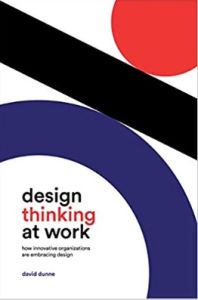Join getAbstract to access the summary!

Join getAbstract to access the summary!
David Dunne
Design Thinking at Work
How Innovative Organizations are Embracing Design
University of Toronto Press, 2018
What's inside?
Design thinking expert David Dunne offers guidance for infusing creativity into your firm.
Recommendation
More than ever, executives seek creativity and innovation from their teams. Their greatest hope that their teams will discover a disruptive breakthrough that can dominate their industries. Their greatest fear is to find themselves on the wrong end of disruption. David Dunne, a foremost expert in the field, explains the advantages of design thinking: advance warning of future disruption, a stream of incremental improvements to existing products and even game-changing innovation. But, he warns, design thinking works only if you understand it well and apply it with patience. Unlike many authors who extol the wonders of design and creativity, Dunne doesn’t cheerlead. He offers a sober assessment, including the common mistakes leaders make and the ongoing difficulty of making true design thinking succeed and endure in organizations. Leaders should embrace this slim volume, including the high-level steps they must take to overcome the common pitfalls that undermine design thinking initiatives.
Summary
About the Author
David Dunne worked with Roger Martin and other thought leaders at the Rotman School of Management in Toronto and teaches design thinking at the University of Victoria in British Columbia.



















Comment on this summary